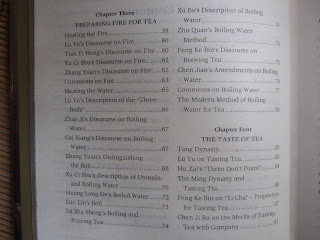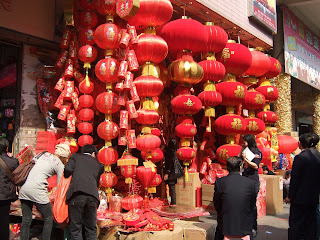




The Ancient Art Of Tea - Written by Warren Peltier from Tuttle Publishing. Printed this year and its already available at the public libraries here.
This book attempts to translate some of the chinese texts and writings on chinese tea and as the author puts it "More Specifically, this book demonstrates the variety of tea brewing skills in ancient times. Much of this knowledge can be directly applied and used in tea preparation today........I hope these translations, many of which have never been translated into English, provide clear insight into Chinese tea culture and help to foster a deeper appreciation of tea."
The author did a a wonderful job in the translations (I myself acknowledge that such translations are difficult as sometimes the meaning or thoughts can be lost in the translation process). Look at pix 2 (click for enlarged views) and you can appreciate that during the olden times, the preparation, tasting and the etiquette of tea can be quite complex. Very interesting reading.
An excerpt from Hu Zai's "Three Don't Pours"
"1. Tea non-new, spring water non-sweet, utensils unclean: first don't pour
2. Foul weather. ugly scenery: second don't pour
3. Uncultured, rude guest: third don't pour."
This book also comes with a few colored illustrations and overall makes a very interesting read for me. Price listed on cover is US$15.95.










